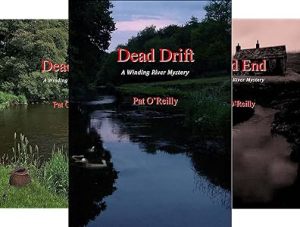Swallowtail - Papilio machaon
Phylum: Arthropoda - Class: Insecta - Order: Lepidoptera - Family: Papilionidae
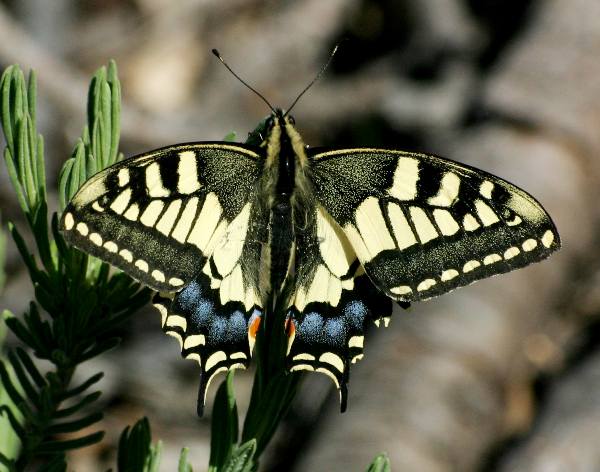
In the wild in Britain this lovely butterfly is a very rare sight, confined to parts of the fens of Norfolk. In southern England, where occasionally specimens stray from northern France, the preferred habitat of this large, colourful butterfly is damp wildflower meadows. Elsewhere in Europe it frequents woodland edges and gardens, too.
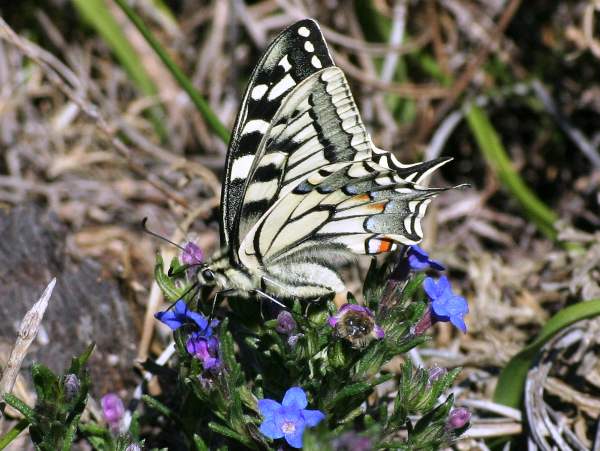
The Swallowtail is a large butterfly; its wingspan is typically between 9 and 10cm.
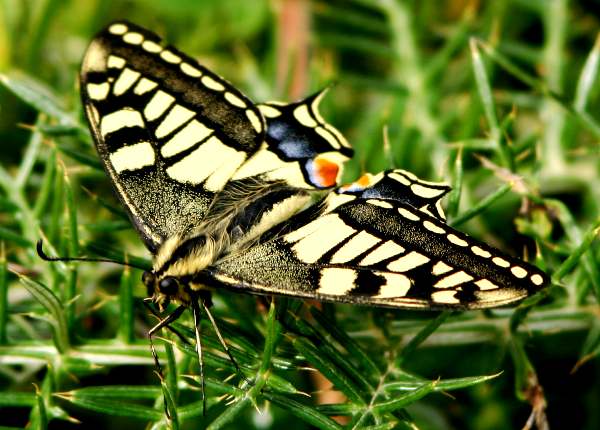
Distribution
With climate change this once rare visitor to Britain may eventually be seen rather more often, but at present it is still unusual to see a Swallowtail anywhere except for the occasional migrant in the south-east of England.
Swallowtails are a very common sight on mainland Europe and the Far East. The specimen shown above was photographed in the Algarve near Aljezur, on the west coast just north of Cape St Vincent.
Lifecycle

In most countries the Swallowtail produces two broods, the first in May and early June and the second in August. Butterflies that emerge in early summer lay their yellowish eggs singly on the upper leaves or stems of Hog's Fennel, also known as Milk Parsley Peucidanum palustre.
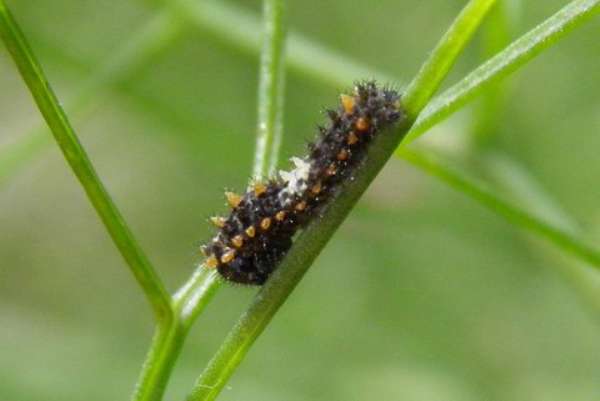
Caterpillars emerge after about a week; they are black with a white band.
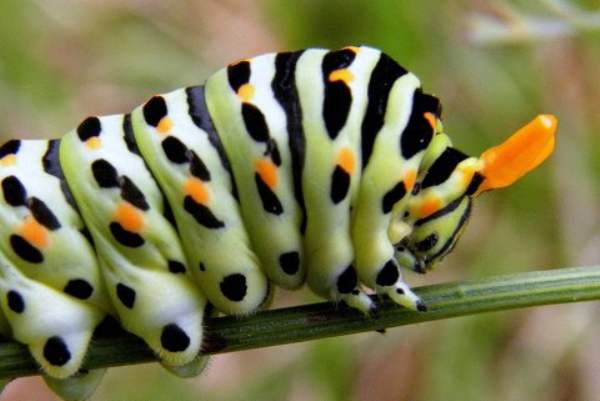
By July, when the first-brood caterpillars are fully grown and ready to pupate, they have turned bright green and are ornamented with narrow black bands and orange spots.
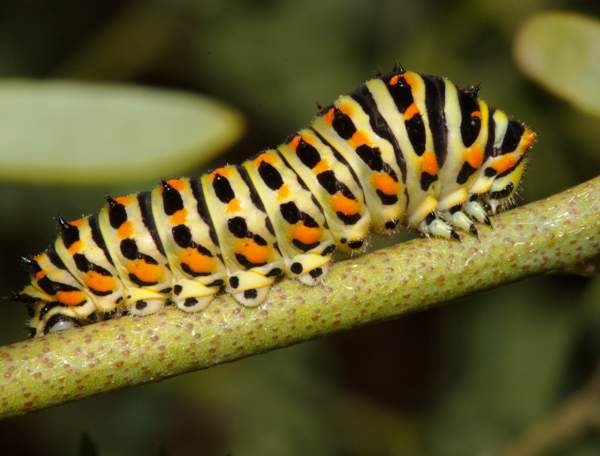
The larva shown above was photographed at Benagil, on the Algarve in southern Portugal.
The chrysalis, which may be either plain green or pale brown with a darker brown stripe, is attached to the stem of a reed. In this form the insect hibernates until the following year.
Acknowledgement
This page includes pictures kindly contributed by Steve Jelf and Rob Petley-Jones.
Studying butterflies and moths...
Excited at the prospect of flyfishing? So are we, and we're pretty sure you would find the Winding River Mystery trilogy of action-packed thrillers gripping reading too. Dead Drift, Dead Cert, and Dead End are Pat O'Reilly's latest river-and-flyfishing based novels, and now they are available in ebook format. Full details on our website here...
Buy each book for just £4.96 on Amazon...
Please Help Us: If you have found this information interesting and useful, please consider helping to keep First Nature online by making a small donation towards the web hosting and internet costs.
Any donations over and above the essential running costs will help support the conservation work of Plantlife, the Rivers Trust and charitable botanic gardens - as do author royalties and publisher proceeds from books by Pat and Sue.
